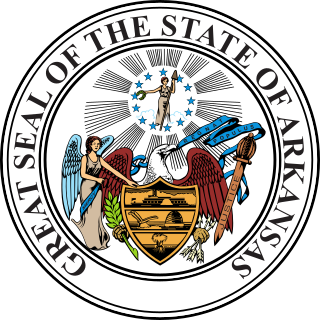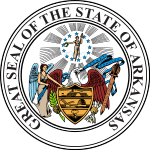
The 1974 United States Senate elections were held on November 5, with the 34 seats of Class 3 contested in regular elections. They occurred in the wake of the Watergate scandal, Richard M. Nixon's resignation from the presidency, and Gerald Ford's subsequent pardon of Nixon. Economic issues, specifically inflation and stagnation, were also a factor that contributed to Republican losses. As an immediate result of the November 1974 elections, Democrats made a net gain of three seats from the Republicans, as they defeated Republican incumbents in Colorado and Kentucky and picked up open seats in Florida and Vermont, while Republicans won the open seat in Nevada. Following the elections, at the beginning of the 94th U.S. Congress, the Democratic caucus controlled 60 seats, and the Republican caucus controlled 38 seats.

The 1972 United States Senate elections were held on November 7, with the 33 seats of Class 2 contested in regular elections. They coincided with the landslide re-election of Republican President Richard Nixon. Despite Nixon's landslide victory, Democrats increased their majority by two seats. The Democrats picked up open seats in Kentucky and South Dakota, and defeated four incumbent senators: Gordon Allott of Colorado, J. Caleb Boggs of Delaware, Jack Miller of Iowa, and Margaret Chase Smith of Maine. The Republicans picked up open seats in New Mexico, North Carolina, and Oklahoma, and defeated one incumbent, William B. Spong Jr. of Virginia.

The 1970 United States Senate elections was an election for the United States Senate. It took place on November 3, with the 33 seats of Class 1 contested in regular elections. Special elections were also held to fill vacancies. These races occurred in the middle of Richard Nixon's first term as president. The Democrats lost a net of three seats, while the Republicans and the Conservative Party of New York picked up one net seat each, and former Democrat Harry F. Byrd Jr. was re-elected as an independent.

The 1968 United States Senate elections were elections for the United States Senate. Held on November 5, the 34 seats of Class 3 were contested in regular elections. They coincided with the presidential election of the same year. The Republicans picked up five net seats in the Senate. This saw Republicans win a Senate seat in Florida for the first time since Reconstruction.

The 1966 United States Senate elections were elections on November 8, 1966, for the United States Senate which occurred midway through the second term of President Lyndon B. Johnson. The 33 seats of Class 2 were contested in regular elections. Special elections were also held to fill vacancies. With divisions in the Democratic base over the Vietnam War, and with the traditional mid-term advantage of the party not holding the presidency, the Republicans took three Democratic seats, thereby breaking Democrats' 2/3rds supermajority. Despite Republican gains, the balance remained overwhelmingly in favor of the Democrats, who retained a 64–36 majority. Democrats were further reduced to 63–37, following the death of Robert F. Kennedy in June 1968.

The 1964 United States Senate elections were held on November 3. The 33 seats of Class 1 were contested in regular elections. Special elections were also held to fill vacancies. They coincided with the election of President Lyndon B. Johnson by an overwhelming majority, to a full term. His Democratic Party picked up a net two seats from the Republicans. As of 2023, this was the last time either party has had a two-thirds majority in the Senate, which allowed the Senate Democrats to override a veto, propose constitutional amendments, or convict and expel certain officials without any votes from Senate Republicans. However, internal divisions would have prevented the Democrats from having done so. The Senate election cycle coincided with Democratic gains in the House in the same year.

The 1960 United States Senate elections coincided with the election of John F. Kennedy as president on November 8, 1960. The 33 seats of Class 2 were contested in regular elections. A special election was also held on June 28, 1960, for a mid-term vacancy in North Dakota where Democrats flipped a seat to expand their majority to 66–34. As Majority Leader Lyndon Johnson was elected Vice President, Mike Mansfield became the new majority leader.

The 1958 United States Senate elections were elections for the United States Senate which occurred in the middle of President Dwight D. Eisenhower's second term. Thirty-two seats of Class 1 were contested in regular elections, the new state of Alaska held its first Senate elections for its Class 2 and 3 seats, and two special elections were held to fill vacancies.

The 1932 United States Senate elections coincided with Democrat Franklin D. Roosevelt's landslide victory over incumbent Herbert Hoover in the presidential election. The 32 seats of Class 3 were contested in regular elections, and special elections were held to fill vacancies.

The 1978 Arkansas gubernatorial election, held on November 7, was the first time that future President Bill Clinton was elected Governor of Arkansas.

The 1992 United States Senate election in Arkansas was held on November 3, 1992. Incumbent Democratic Senator Dale Bumpers won re-election to a fourth term. His Republican opponent was future Arkansas lieutenant governor, governor, and two-time presidential candidate Mike Huckabee, a church pastor from Texarkana.

The 1996 United States Senate election in Arkansas was held on November 5, 1996. Incumbent Democratic U.S. Senator David Pryor decided to retire. Republican Tim Hutchinson won the open seat, becoming the first Republican to win a U.S. Senate seat in Arkansas since Reconstruction in 1872 and the first to ever be popularly elected in the state. He was the first to win this seat since 1870.

The 1974 United States Senate election in Arkansas took place on November 5, 1974. Incumbent Democratic U.S. Senator J. William Fulbright ran for re-election to a sixth term in office, but was defeated in the Democratic primary by Governor of Arkansas Dale Bumpers. Bumpers won the general election easily.

The 1968 Arkansas gubernatorial election was held on November 5, when incumbent Republican Winthrop Rockefeller defeated former Speaker of the Arkansas House of Representatives Marion Crank by a small margin. Rockefeller was first elected in 1966, and was the first Republican to hold the office since Reconstruction. This was the first time a Republican was re-elected as Governor of Arkansas.

The 1922 United States Senate election in California was held on November 7, 1922. Incumbent Republican Senator Hiram Johnson was re-elected to his second term in office.

The United States Senate election in California of 1940 was held on November 5, 1940. Incumbent Republican Senator Hiram Johnson was re-elected to his fifth term in office, though he would die in office in 1945.

The 1966 United States Senate election in Arkansas took place on November 8, 1966. Incumbent U.S. Senator John L. McClellan was re-elected to a fifth term in office.

The 1966 United States Senate election in Kansas took place on November 8, 1966, concurrently with elections to the United States Senate in other states as well as elections to the United States House of Representatives and various state and local elections.

The 1966 United States Senate election in New Hampshire took place on November 8, 1966. Incumbent Democratic Senator Thomas J. McIntyre won re-election to a full term, having first been elected in a special election in 1962.

The 1972 United States Senate election in Arkansas took place on November 7, 1972. Incumbent U.S. Senator John L. McClellan was re-elected to a sixth term in office, defeating U.S. Representative David Pryor in a hotly contested primary. In the general election, McClellan easily defeated Republican physician Wayne Babbitt. This was McClellan's final campaign; he died in his sleep in 1977. Pryor was elected Governor of Arkansas in 1974 and won the race to succeed McClellan in 1978.























